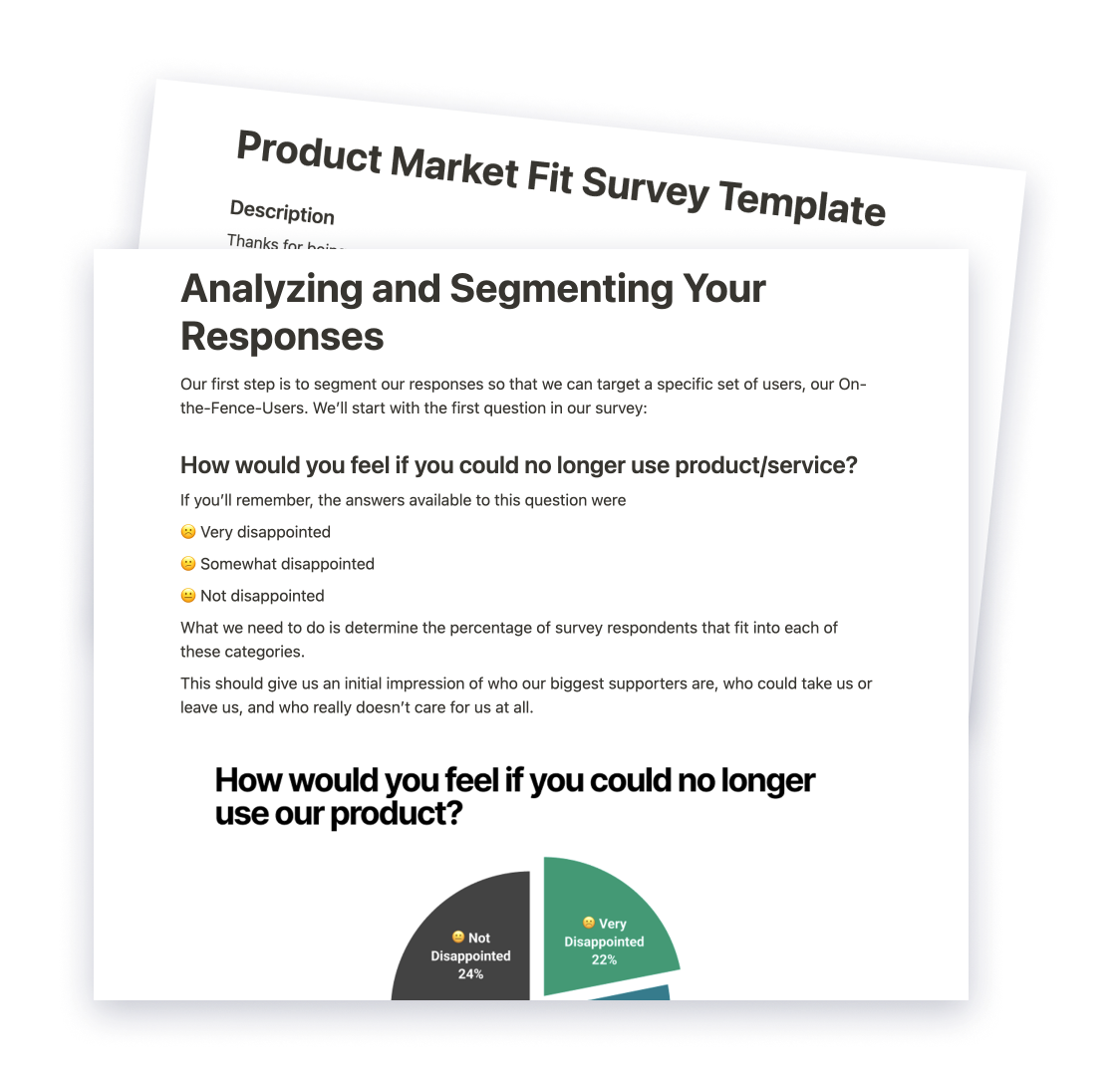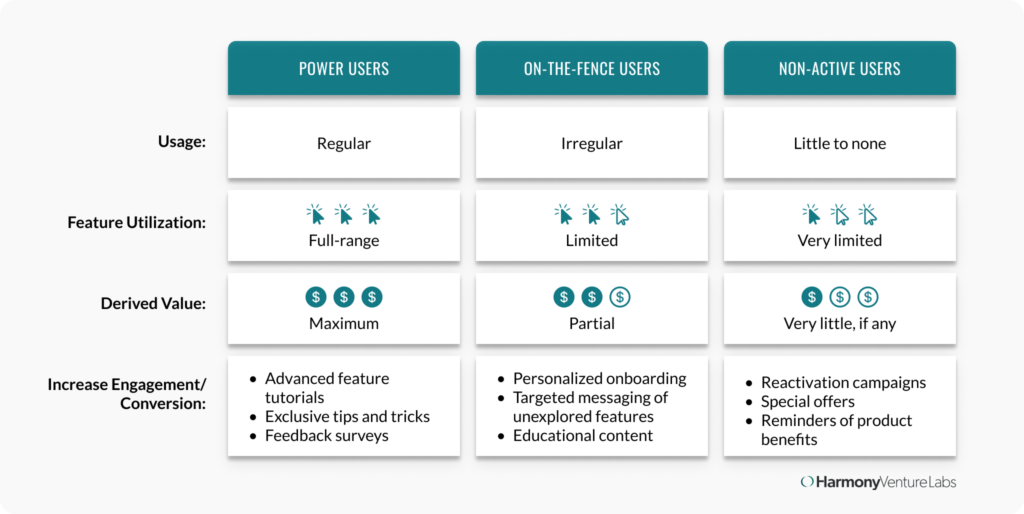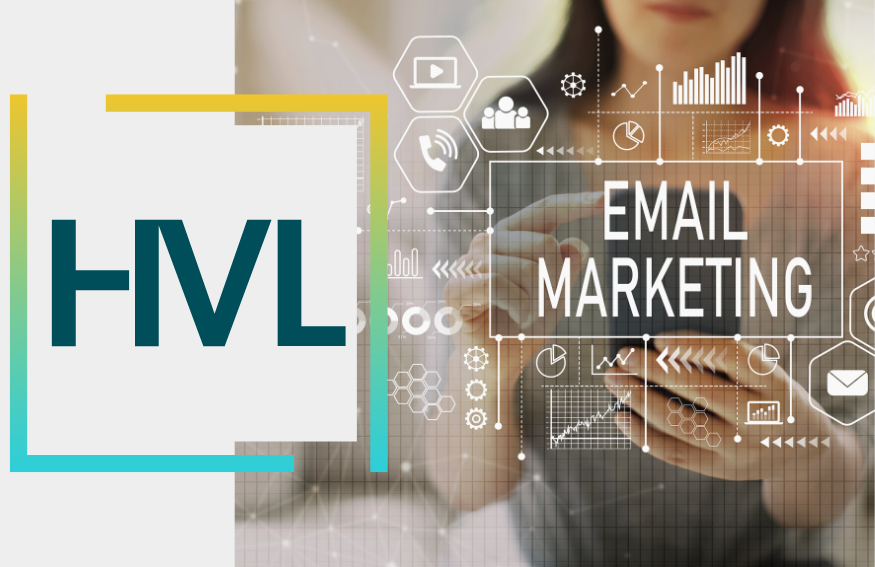PLG (Product-Led-Growth) is revolutionizing business strategies, with 91% of companies increasing their investment using this approach. But in the midst of this sea of potential growth, how do you make sure you are attracting the right leads? The answer lies in the power of user segmentation.
In this comprehensive guide, we will demystify user segmentation for PLG SaaS, giving you the tools to boost your growth strategy and focus on the things that matter.
Table of contents:
- What is user segmentation?
- Why does user segmentation matter?
- How can I implement segmentation in my business?
- Examples of User Segmentation in the SaaS Industry
With the right user segmentation strategy in place, you’ll be able to understand your users on a deeper level, anticipate their needs, and deliver targeted experiences that make them say, “Wow, they really get me!” By the end of this guide, you’ll have actionable tips, out-of-the-box ideas, and real-world examples to supercharge your PLG SaaS growth journey.
So, let’s dive in.

Download Free Growth Guide
Click here to download and unlock the full potential of user segmentation for your PLG SaaS company.
What is user segmentation?
User segmentation, in the context of PLG SaaS, refers to the practice of dividing your user base into distinct groups or segments based on common characteristics, behaviors, or needs. It goes beyond general demographics and takes into account specific usage patterns, preferences, and engagement levels within your product.
How segmentation can enhance user experience and drive growth:
User segmentation allows you to tailor your product experience, messaging, and marketing efforts to specific user groups. By understanding the unique needs and pain points of each segment, you can provide personalized solutions, improve user satisfaction, and ultimately drive growth. Instead of taking a one-size-fits-all approach, user segmentation empowers you to deliver targeted experiences that resonate with different user segments, fostering deeper engagement and increasing adoption rates.
For example, let’s consider a PLG SaaS project management tool. By segmenting users based on their team size, industry, and feature adoption, the company can customize the product experience to cater to the specific requirements of each segment. They may offer different templates, integrations, and collaboration features tailored to the needs of small teams in creative industries versus large enterprise teams in the finance sector. This level of personalization enhances user satisfaction, boosts user adoption, and drives overall growth.
Considerations PLG SaaS companies should keep in mind:
PLG SaaS companies have their own set of considerations when it comes to user segmentation. Unlike traditional software companies, PLG SaaS businesses rely heavily on self-service user onboarding and product-led trials to drive adoption and conversions. Therefore, user segmentation in the PLG SaaS world should focus not only on understanding user characteristics but also on tracking user behaviors and product engagement metrics.
For instance, PLG SaaS companies often segment users based on usage patterns, such as power users, on-the-fence users, and non-active users. This segmentation helps identify opportunities to engage and convert on-the-fence users into power users through targeted feature promotion, personalized onboarding experiences, or tailored in-app messages. By understanding the specific behaviors and needs of each segment, PLG SaaS companies can optimize their user acquisition and retention strategies for maximum growth.
Key Takeaway: 💡In the world of PLG SaaS, user segmentation is not just about demographics but about diving deep into user behaviors, preferences, and product engagement.
Common Types of User Segments for PLG SaaS
Usage-based Segmentation
Usage-based segmentation involves categorizing users based on their level of engagement and activity within your PLG SaaS product. By differentiating between power users, on-the-fence users, and non-active users, you can develop targeted strategies to increase engagement and drive conversions within each segment.
Differentiating power users, on-the-fence users, and non-active users:
Power users are enthusiastic advocates of your product who regularly utilize its full range of features and derive maximum value. On-the-fence users, on the other hand, may engage with your product intermittently or only use a limited set of features. Non-active users are those who have shown little to no engagement for a significant period.
Strategies for increasing engagement and conversion within each segment:
For power users, focus on providing advanced feature tutorials, exclusive tips and tricks, and opportunities for feedback to foster their loyalty and encourage them to become ambassadors for your product.
To convert on-the-fence users into power users, implement personalized onboarding journeys, targeted emails or in-app messages highlighting unexplored features, and educational content that showcases the value and benefits of advanced functionality.
For non-active users, re-engage them through personalized reactivation campaigns, special offers, and reminders of the benefits they can gain from using your product. Additionally, seeking feedback to understand their pain points can help tailor re-engagement strategies effectively.

Industry-based Segmentation
Industry-based segmentation involves segmenting users based on the verticals or industries they belong to. This segmentation allows you to address industry-specific pain points, understand unique needs, and offer tailored solutions that resonate with each segment.
Segmenting users by verticals or industries served:
Identify the industries or verticals that your PLG SaaS product caters to. Examples could include healthcare, e-commerce, finance, or education. Analyze the specific challenges and requirements that users in each industry face when using your product.
Addressing industry-specific pain points and offering tailored solutions:
Develop industry-specific messaging, case studies, and success stories that showcase how your product addresses the pain points of each segment. Create industry-specific templates, integrations, or modules to enhance the value and relevance of your product within each industry.
Feature Adoption Segmentation
Feature adoption segmentation involves identifying users who have not fully explored or utilized key features of your PLG SaaS product. By understanding feature adoption patterns, you can personalize onboarding experiences and feature education to nurture these users and drive their engagement.
Identifying users who have not explored or fully utilized key features:
Analyze user data and identify users who have yet to explore or effectively leverage important features within your product. This could be through tracking usage metrics, feature-specific interactions, or user feedback.
Nurturing these users through personalized onboarding and feature education:
Create targeted onboarding experiences that focus on guiding users toward feature adoption. Provide in-app tutorials, tooltips, or contextual guides to educate users about the value and benefits of specific features. Segment users based on their feature adoption progress and customize the messaging and guidance accordingly.
Customer Lifecycle Segmentation
Customer lifecycle segmentation involves categorizing users based on their stage in the customer journey, including prospects, trial users, and paying customers. By understanding the unique needs and challenges of each stage, you can implement targeted campaigns to address their specific requirements.
Categorizing users based on their stage in the customer lifecycle:
Segment users based on their progression through the customer journey. This could include leads or prospects who have shown interest, trial users who are evaluating your product, and paying customers who have converted into active users.
Implementing targeted campaigns to address the unique needs of each stage:
For leads or prospects, focus on lead nurturing campaigns. This can be through personalized emails, informative content, and targeted messaging to encourage them to try your product.
For trial users, provide a seamless onboarding experience, access to premium features, and personalized support. This will increase their likelihood of conversion into paying customers.
For paying customers, nurture their loyalty through customer success programs, exclusive perks, and proactive communication. This will help drive retention, expansion, and advocacy.
Ready to take your PLG SaaS company to the next level? Discover the untapped potential of user segmentation with our comprehensive growth guide. Learn how to effectively segment users based on behavior and sentiment, and unlock personalized growth opportunities for your business.
Key Takeaway: 💡 The four types of segmentation tactics are product usage, industry-based, feature adoption, and customer lifecycle segmentation. Leverage product analytics and user data to paint an accurate picture of who your customer segments are.
Examples of User Segmentation in PLG SaaS
A. Project Management Software
Segmenting users based on team size, industry, and feature adoption:
In the realm of project management software, segmenting users based on team size, industry, and feature adoption can provide valuable insights for tailoring the product experience.
For instance, a project management software company may segment users into small, medium, and large teams to understand their specific needs. They can further refine the segmentation by industry to address industry-specific pain points. Additionally, analyzing feature adoption can help identify users who have not fully utilized certain functionalities.
Offering customized templates, integrations, and collaboration features:
Based on the identified user segments, the project management software company can offer customized templates that align with the specific needs and workflows of different industries or team sizes. Integrations with popular tools used in specific industries can enhance productivity and streamline workflows.
Furthermore, providing collaboration features tailored to different team sizes, such as task assignments, progress tracking, and communication tools, ensures that users have the right set of capabilities to effectively manage their projects.
B. Email Marketing Platform
Segmenting users by email list size, industry, and engagement metrics:
For an email marketing platform, segmenting users based on factors like email list size, industry, and engagement metrics can greatly enhance the effectiveness of campaigns and improve user experiences.
By segmenting users based on their email list size, the platform can provide tailored recommendations and best practices for list management, ensuring optimal deliverability and engagement rates. Segmenting by industry enables the platform to offer industry-specific templates, content ideas, and benchmarks.
Analyzing engagement metrics, such as open rates and click-through rates, helps identify users who may need assistance in improving their email performance. Targeted tips, automated workflows, and data-driven insights can be provided to enhance engagement and maximize the effectiveness of email campaigns.
Providing tailored automation workflows, deliverability insights, and targeting options:
Based on the different user segments, the email marketing platform can offer pre-built automation workflows that cater to specific business goals and objectives. These workflows can include personalized onboarding, lead nurturing, or re-engagement sequences to drive desired outcomes.
Additionally, providing deliverability insights and recommendations to users with lower engagement or deliverability rates can help them optimize their email-sending practices. Advanced targeting options, such as segmenting by user behavior or preferences, allow users to send highly personalized and relevant content to specific segments, resulting in improved engagement and conversions.
C. Customer Support Software
Segmenting users based on ticket volume, team size, and customer satisfaction ratings:
For a customer support software company, segmenting users based on ticket volume, team size, and customer satisfaction ratings can enable personalized support experiences and efficient issue resolution.
Segmenting users by ticket volume helps prioritize and allocate resources effectively, ensuring that high-volume customers receive prompt attention. Understanding team sizes allows the company to provide recommendations on team collaboration features, permissions, and access levels to optimize its support workflow.
By tracking customer satisfaction ratings, the company can identify users who may require additional assistance or support. Proactive outreach, personalized reporting, or knowledge base recommendations can be offered to improve their experience and increase satisfaction levels.
Offering personalized reporting, knowledge base organization, and integrations:
Based on the identified user segments, the customer support software company can provide personalized reporting that aligns with the specific metrics and KPIs relevant to each segment. This empowers users to track and analyze the performance of their support team effectively.
Organizing the knowledge base according to different industries or team sizes ensures that users can easily access relevant resources and self-help documentation. Integrations with popular helpdesk systems, communication tools, or CRMs enable seamless workflow integrations and data synchronization for a smoother support experience.
Key Takeaway: 💡 Regardless of the industry you’re in, user segmentation is key to fueling your product-led growth motion.
Wrapping Up
User segmentation is a game-changer for PLG SaaS companies, enabling them to deliver personalized experiences, drive growth, and create meaningful connections with their users. Throughout this guide, we have explored the importance of user segmentation, common types of segments, and practical strategies for implementation.
By segmenting users based on factors such as usage patterns, industry, feature adoption, and customer lifecycle stages, PLG SaaS companies can unlock a world of personalized growth opportunities. Tailoring product experiences, messaging, and support to specific segments allows companies to better understand their users, anticipate their needs, and provide solutions that truly resonate.
Now is the time to take action and implement user segmentation within your own PLG SaaS company. Dive deep into your user data, analyze patterns and behaviors, and start crafting personalized experiences that truly connect with your audience. By harnessing the power of user segmentation, you have the opportunity to transform the way your users engage with your product and pave the way for sustainable growth.
To guide you through the process of segmenting your users based on behavior and sentiment toward your product, we have created a comprehensive growth guide. This step-by-step resource will walk you through the process of identifying on-the-fence users and nudging them into the happy path, ultimately boosting retention and satisfaction levels.

Download Free Growth Guide
Click here to download and unlock the full potential of user segmentation for your PLG SaaS company.
Get ready to revolutionize your growth strategy and create personalized experiences by harnessing the power of user segmentation in the world of PLG SaaS. The future of your company’s growth awaits!




